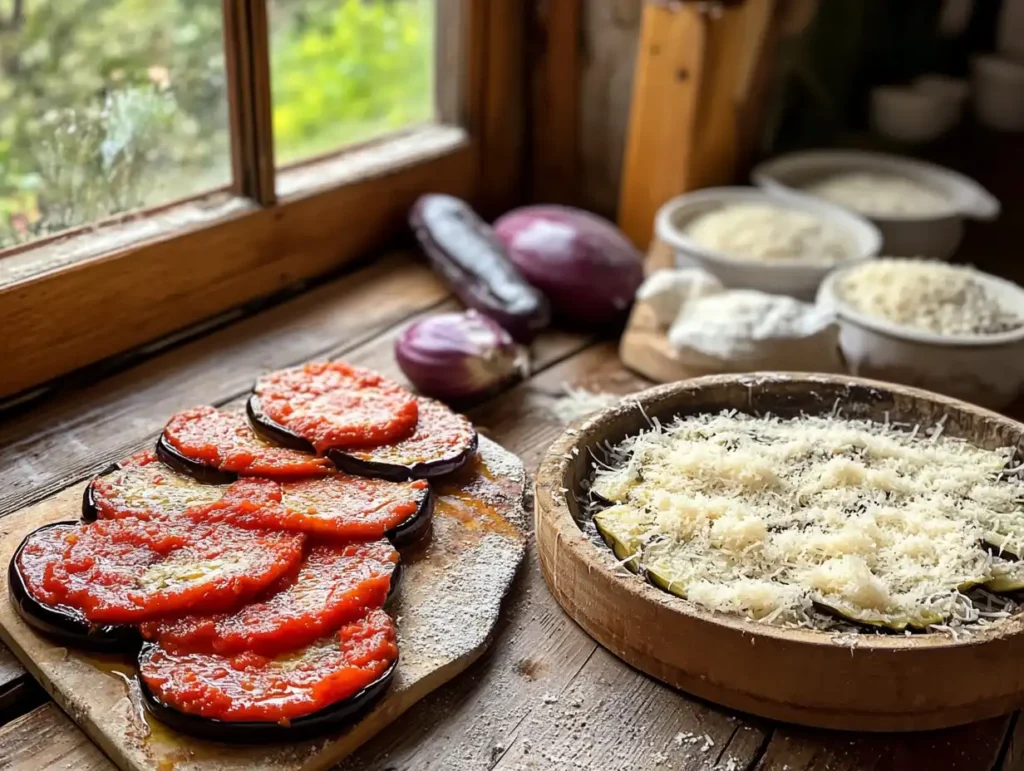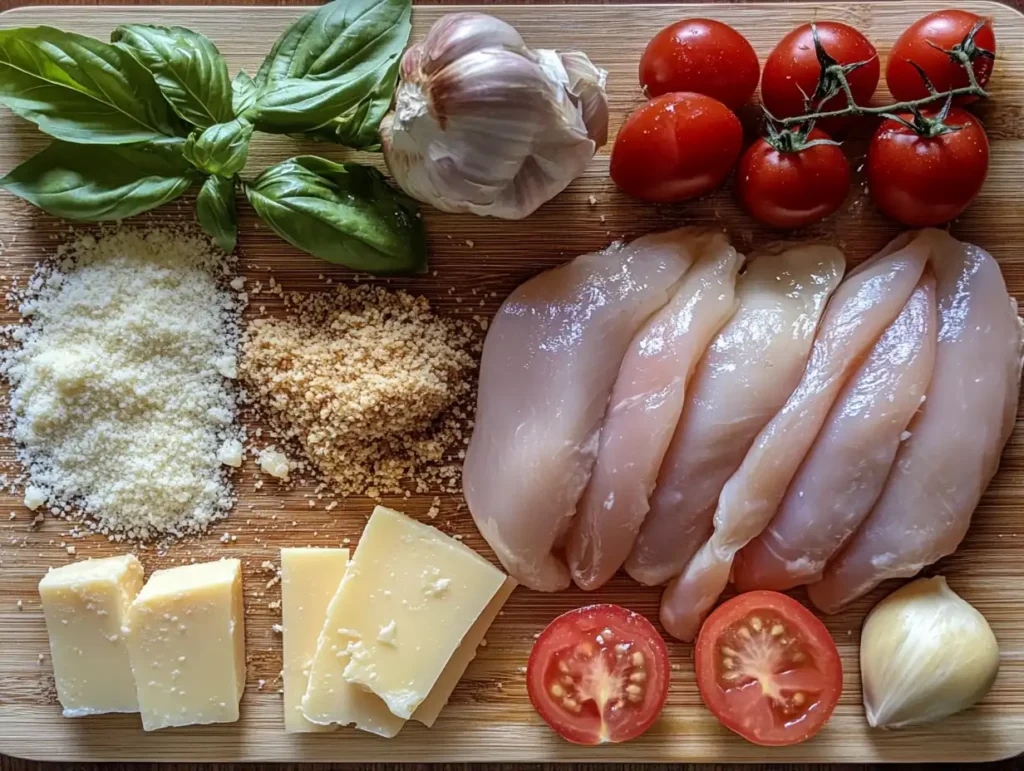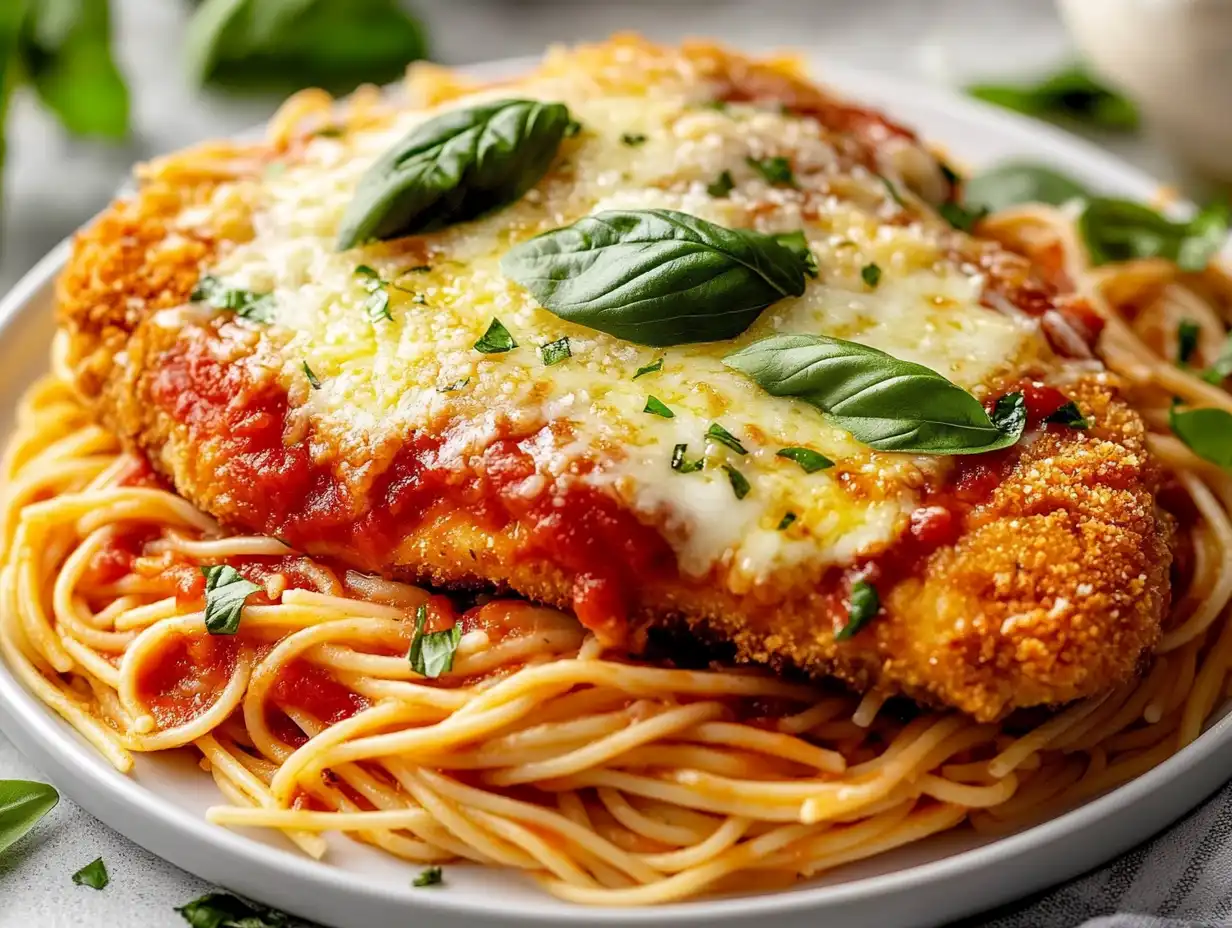Introduction
Chicken Parmesan, affectionately known as Chicken Parm, is a dish that has captured hearts and taste buds worldwide. But why is Chicken Parmesan so good? From the crispy breading to the gooey melted cheese, every element of this dish is designed to delight the senses. This Italian-American classic is more than just a meal—it’s a comforting experience that resonates with food lovers everywhere.
In this article, we’ll explore why Chicken Parmesan is so good by delving into its history, ingredients, cooking techniques, and more. Whether you’re a long-time fan or a curious foodie, you’ll discover what makes this dish an enduring favorite.
History of Chicken Parmesan
Chicken Parmesan traces its origins to Italy, inspired by Eggplant Parmesan. So, why is Chicken Parmesan so good today? The answer lies in how Italian immigrants adapted traditional recipes to create a more indulgent version using chicken. Over time, it evolved into a globally beloved comfort food, bringing joy to dinner tables everywhere.

The Italian Origins of Chicken Parmesan
Chicken Parmesan finds its roots in the traditional Italian dish known as Eggplant Parmesan (Melanzane alla Parmigiana). This vegetarian staple, originating from Southern Italy, particularly Naples and Sicily, involved layering breaded and fried eggplant slices with tomato sauce and Parmesan cheese before baking it to perfection. The use of Parmesan cheese, or Parmigiano-Reggiano, gave the dish its name and signature flavor.
When Italian immigrants brought their culinary traditions to the United States, they adapted recipes to incorporate locally available and affordable ingredients. Chicken, being more accessible than eggplant or veal, became a natural substitution, paving the way for the creation of Chicken Parmesan as we know it today.
How It Evolved in the United States
In the bustling Italian-American communities of the early 20th century, Chicken Parmesan quickly gained popularity. Italian-American chefs combined their traditional recipes with the American penchant for larger portions and heartier meals. Over time, the dish became a restaurant staple, particularly in family-owned Italian eateries, where it was often served alongside spaghetti or other pasta.
The inclusion of mozzarella cheese, a nod to the American love for gooey, melted toppings, added a new layer of richness to the dish. As it gained popularity, Chicken Parmesan transitioned from a niche Italian-American creation to a mainstream favorite across the country.
Chicken Parmesan in Global Cuisine
Today, Chicken Parmesan is recognized and loved worldwide, often with regional twists. In Australia, “Parmi” or “Parma” is a pub favorite, typically served with fries and salad. In Canada, variations may include spicy marinades or different cheese blends, reflecting local tastes.
From its humble beginnings in Southern Italy to its modern global adaptations, Chicken Parmesan has become a dish that transcends borders, uniting food lovers everywhere with its comforting and indulgent flavors.
The Ingredients That Make It Special
One of the reasons why Chicken Parmesan is so good lies in its ingredients. Fresh chicken breast provides a tender base, while Parmesan and mozzarella cheese deliver richness and depth. A well-prepared tomato sauce ties everything together, creating a dish that’s as satisfying as it is flavorful.

Fresh Chicken Breast: The Star of the Dish
At the heart of Chicken Parmesan is the chicken itself. Typically, boneless, skinless chicken breasts are used for their tender and lean qualities. When pounded thin, they cook evenly and serve as the perfect canvas for breading and toppings. The chicken’s mild flavor allows it to soak up the rich tomato sauce and creamy cheese, creating a harmonious blend of tastes.
The Role of Parmesan and Mozzarella Cheeses
Cheese is what sets Chicken Parmesan apart from similar dishes. Parmesan, with its nutty and slightly salty profile, enhances the dish’s overall flavor. Meanwhile, mozzarella adds the gooey, melty texture that makes each bite a delight. Some variations also incorporate provolone or a sprinkle of Pecorino Romano for additional depth and sharpness. The careful balance of these cheeses is crucial to achieving the dish’s signature richness.
Importance of a Well-Prepared Tomato Sauce
The tomato sauce in Chicken Parmesan isn’t just an accompaniment; it’s a vital component. A good sauce uses ripe tomatoes, garlic, olive oil, and fresh herbs like basil and oregano. Its tangy and slightly sweet flavor complements the savory breaded chicken and creamy cheeses. Whether made from scratch or sourced from high-quality brands, the sauce is the glue that holds the dish together, both figuratively and literally.
Bread Crumbs and Seasoning Perfection
The breading on the chicken is another defining feature of Chicken Parmesan. A mixture of bread crumbs, often seasoned with Italian herbs like parsley and oregano, creates a crispy outer layer that contrasts beautifully with the tender chicken inside. Some cooks prefer to mix in grated Parmesan cheese or panko for extra crunch. A light dredge in flour and egg before coating ensures the breading adheres perfectly, delivering a satisfying crunch in every bite.
These carefully selected ingredients come together to create the magic of Chicken Parmesan. Next up, we’ll delve into the Cooking Techniques for Excellence that make this dish irresistible.
Cooking Techniques for Excellence
Properly Breading and Frying the Chicken
The breading and frying process is a key step in crafting the perfect Chicken Parmesan. To achieve the ideal crust, the chicken breast is first pounded thin, dipped in flour to absorb moisture, then coated with a beaten egg mixture for binding. Finally, it’s dredged in a seasoned bread crumb mix. Frying the chicken in hot oil until golden brown ensures a crisp exterior while locking in moisture.
Secrets to a Balanced Tomato Sauce
A flavorful tomato sauce elevates Chicken Parmesan from good to extraordinary. Start by sautéing garlic and onions in olive oil to create a rich base. Use high-quality canned or fresh tomatoes, and season with salt, pepper, and fresh herbs like basil. Simmering the sauce gently allows the flavors to meld, resulting in a smooth, tangy complement to the chicken and cheese.
Layering for Flavor and Texture
The layering process is an art. Place the fried chicken in a baking dish, ensuring enough space for even cooking. Spoon a generous layer of tomato sauce over the chicken, followed by a blend of grated Parmesan and shredded mozzarella. This layering technique ensures every bite delivers a harmonious mix of crispy, savory, and creamy elements.
Baking to Golden Perfection
Baking is the final step in bringing Chicken Parmesan to life. A preheated oven, typically set at 375°F (190°C), ensures even heating. Bake the dish until the cheese is fully melted and bubbling, with a golden-brown crust forming on top. This step melds the flavors together and gives the dish its iconic appearance.
Mastering these cooking techniques is essential for creating a Chicken Parmesan that satisfies both the palate and the soul.
The Science Behind Its Appeal
The Balance of Umami, Salt, and Fat
Chicken Parmesan is a masterpiece of flavor balance. The umami-rich tomato sauce and Parmesan cheese deliver a savory depth that is irresistible. The natural saltiness of the cheese complements the dish, while the fat from the cheese and fried chicken provides a luxurious mouthfeel. This combination triggers pleasure centers in the brain, making the dish incredibly satisfying.
The Role of Texture: Crunch Meets Creaminess
he textural contrast plays a major role in the dish’s appeal. Crispy breading on the chicken creates a satisfying crunch, offering a delightful contrast to the creamy melted cheese and smooth tomato sauce. This interplay of textures ensures every bite is both exciting and enjoyable, making it nearly impossible to resist.
Aromatic Appeal: From the Cheese to the Herbs
The aroma of Chicken Parmesan is a sensory delight. As it bakes, the fragrance of bubbling cheese, fresh basil, and tangy tomato sauce fills the air, heightening anticipation. This olfactory experience contributes to the dish’s overall appeal, as smell plays a significant role in how we perceive taste.
Chicken Parmesan’s enduring popularity can be traced not just to its ingredients but to how they work together to create a multi-sensory dining experience.
Chicken Parmesan as Comfort Food
Why It Feels Nostalgic and Comforting
Chicken Parmesan resonates as a comfort food because it evokes feelings of warmth and familiarity. Its hearty and satisfying nature makes it a go-to dish for family dinners and gatherings. For many, the dish is tied to memories of home-cooked meals, where the love and effort put into its preparation make it even more special.
Its Versatility: Dinner, Leftovers, or Sandwiches
Chicken Parmesan is one of the most versatile dishes in Italian-American cuisine. It’s traditionally served as a main course, often accompanied by pasta or a side salad. However, its leftovers are equally cherished, whether reheated or repurposed into hearty sandwiches. This flexibility makes it a perennial favorite in households and restaurants alike.
The Emotional Connection to Home-Cooked Meals
There’s something inherently comforting about food that is made from scratch, and Chicken Parmesan embodies this sentiment. The process of preparing it—breading the chicken, simmering the sauce, and layering the cheese—is a labor of love. This emotional connection enhances its appeal, making every bite a reminder of the care and effort that went into creating it.
Chicken Parmesan’s ability to bring comfort and joy is a testament to its timeless charm.
Popular Variations of Chicken Parmesan
Eggplant Parmesan: The Vegetarian Twist
One of the most beloved variations of Chicken Parmesan is Eggplant Parmesan. Instead of chicken, slices of eggplant are breaded, fried, and layered with tomato sauce and cheese. This vegetarian alternative retains the essence of the dish while offering a lighter, plant-based option. It’s perfect for those who want the flavors of Chicken Parmesan without the meat.
Chicken Parmesan Sliders for Appetizers
For a fun and shareable twist, Chicken Parmesan sliders are a crowd-pleasing appetizer. Small, breaded chicken patties are placed on slider buns, topped with marinara sauce, mozzarella, and Parmesan, then baked until the cheese melts. These bite-sized treats are perfect for parties and gatherings, offering the same delicious flavors in a convenient, handheld form.
Spicy Chicken Parmesan for Adventurous Eaters
For those who love a bit of heat, Spicy Chicken Parmesan is an exciting variation. Adding red pepper flakes or a spicy marinara sauce gives the dish a bold kick. Some recipes even include spicy breading or jalapeños for an extra fiery touch, making it a favorite for adventurous eaters.
Chicken Parmesan’s versatility allows for endless creativity, ensuring there’s a version for every palate.
FAQs
Why Is Chicken Parmesan Called “Parmesan”?
Chicken Parmesan gets its name from the generous use of Parmesan cheese, an integral ingredient in the dish. The name also reflects its roots in the Italian dish Eggplant Parmesan (Parmigiana), where Parmesan cheese plays a key role.
What’s the Best Cheese for Chicken Parmesan?
The best cheese for Chicken Parmesan is a combination of Parmesan and mozzarella. Parmesan adds a nutty, savory flavor, while mozzarella contributes the creamy, gooey texture. Some variations include provolone or Pecorino Romano for additional flavor.
Can You Make Chicken Parmesan Without Frying?
Yes, you can make a healthier version of Chicken Parmesan by baking or air frying the chicken instead of frying it in oil. Baking the breaded chicken in the oven at 400°F (200°C) until golden and crispy is a popular alternative that reduces fat content without sacrificing flavor.
How Do I Reheat Chicken Parmesan Without Drying It Out?
To reheat Chicken Parmesan while keeping it moist, place it in a covered oven-safe dish and heat it at 350°F (175°C) until warmed through. Adding a small amount of marinara sauce on top before reheating can also help retain its moisture.
Can Chicken Parmesan Be Made Gluten-Free?
Absolutely! To make Chicken Parmesan gluten-free, use gluten-free bread crumbs and flour for breading. Ensure the marinara sauce and any additional seasonings are also free of gluten-containing ingredients.
Conclusion
Chicken Parmesan holds a special place in the culinary world, blending the best of Italian and American flavors into one irresistible dish. Its crispy breaded chicken, rich tomato sauce, and gooey cheese create a symphony of taste and texture that has delighted generations. Beyond its flavor, Chicken Parmesan offers a sense of comfort and nostalgia, reminding us of home-cooked meals and shared memories around the table.
Whether you prefer the traditional recipe or one of its many creative variations, Chicken Parmesan is a dish that satisfies cravings, warms the heart, and unites people through the joy of food. Why not try making it yourself or experimenting with a twist to rediscover its magic?
